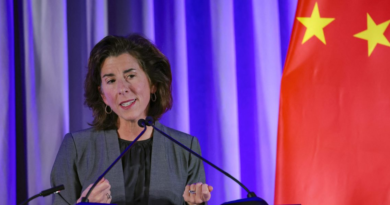Millennials could soon see their parents become their biggest expense–and American families are woefully unprepared
Most millennials and Gen Xers have little idea of what’s going to happen when their parents hit retirement age. That’s about to become an increasingly real problem, particularly for those with parents in the middle-income stratum.
A retirement affordability crisis is escalating in the U.S. Three out of four middle-income older Americans won’t have enough to pay for assisted living services without selling their homes within a decade, according to data analyzed by NORC at the University of Chicago, supported by a grant from The SCAN Foundation.
Baby boomers–a massive generation–are moving into older adulthood. NORC found that there will be 16 million middle-income older adults by 2033. As NORC’s research summary explains: “Many will struggle to pay for the health, personal care, and housing services they need. … Even with home equity, nearly 40% will not be able to afford assisted living.”
Rethinking risk
These expenses have become more onerous for older Americans over time. In 2002, adults over 65 spent $48,000 (adjusted for inflation) a year on average, according to data from the Bureau of Labor Statistics. Today, the average is $58,000, a more than 20% increase. The average rent and medical costs for those in assisted living currently stand at $65,000 a year.
As noted in a Harvard University report, “In 2021, older households with annual incomes between $15,000 and $30,000 had a median of $1,000 per month available to cover other expenses after paying for housing. Those earning less had incomes that, on average, were insufficient to meet their housing costs, to say nothing of other basic needs.”
Racial disparities are only compounding this situation, with people of color experiencing more financial hardship as they age.
Most people want to see their parents stay in their own homes. The same goes for their parents: 89% of Americans over 55 want to age in place, according to a survey by Today’s Homeowner.
Meanwhile, more than half of all Americans feel they’re not on pace to retire comfortably. With younger generations unsure about funding their eventual retirement, they are woefully unprepared to also support their parents.
Something has to give. If you’re in the sandwich generation–Gen X and older millennials–and want to share in the responsibility for their parents’ retirement, you should begin by thinking of your parents’ retirement plans in the context of your own.
Most financial advice suggests people calculate what they’ll need in retirement, and then plan their savings around that number. That’s good counsel, but it’s likely they’re only applying it to themselves and their dependents. Instead, caregivers should recalculate that number and discuss it with their parents.
Tragically, many middle-income older adults might actually benefit from spending down their savings so they qualify for Medicaid, which would enable them to receive government support for assisted living and healthcare.
In addition to understanding that Medicare will not pay for everything, caregivers should have a strong grasp on what their costs will be.
To avoid being caught off-guard by towering monthly expenses, caregivers can derisk by establishing a rainy day fund for their parents’ retirement. Such a fund can be structured differently depending on one’s risk tolerance. Some might choose to only set aside money for their parents’ living costs, while others might want to have emergency funds available for more serious situations.
Having tough conversations
Figuring this all out means having hard conversations with parents. It’s critical that everyone’s on the same page as soon as possible.
For many parents, it’s embarrassing to consider receiving help from their children. Others may feel guilty about burdening them. But families that prefer to brush these discussions under the rug could be in for unexpected and catastrophic surprises when a loved one falls ill or becomes unable to take care of themselves. When this happens, the last thing anyone wants to think about is money.
If it helps, they can be framed more as joint financial planning sessions. That makes everyone feel that they’re playing a vital role. I’ve had such conversations with my parents, and they always went best when I approached them with an inquisitive and open attitude.
These conversations weren’t easy, but they went a long way toward reassuring me about our joint financial health going forward.
Supporting policy changes
Solving this problem on a macro level means working to support policies that aid caregivers.
In particular, the bipartisan Credit for Caring Act, introduced in 2021, would mark a significant step in alleviating the burden on caregivers. The bill provides a tax credit of 30% for qualified caregiving expenses over $2,000, with a maximum credit of $5,000. And it has widespread support from organizations such as the AARP, Alzheimer’s Association, United Way, and Walgreens.
In addition, more states are enacting mandatory paid family leave laws for private employers. As of September 2023, eight states required caregiver leave, and five more are set to implement these policies by 2026.
Writing letters to political representatives, speaking up at town halls, and talking to the media about caregiver struggles can also help influence policymakers’ views on caregiver support.
Some people are also pushing for caregiver leave policies at their workplaces in states without mandatory leave policies. Though employers offer these voluntarily, the more paid leave policies are enacted, the more the idea becomes normalized.
Confronting the affordability crisis for older adults will require a combination of small steps like these and courageous changes among society’s most influential institutions. With dedicated effort, we can help ensure our parents have what they need to age gracefully.
Sarita A. Mohanty is president and CEO of The SCAN Foundation, an organization committed to addressing systemic factors that influence an older individual’s financial security.
More must-read commentary published by Fortune:
- Economic pessimists’ bet on a 2023 recession failed. Why are they doubling down in 2024?
- COVID-19 v. Flu: A ‘much more serious threat,’ new study into long-term risks concludes
- Access to modern stoves could be a game-changer for Africa’s economic development–and help cut the equivalent of the carbon dioxide emitted by the world’s planes and ships
- The U.S.-led digital trade world order is under attack–by the U.S.
The opinions expressed in Fortune.com commentary pieces are solely the views of their authors and do not necessarily reflect the opinions and beliefs of Fortune.




